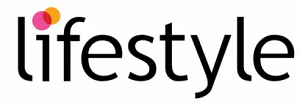If you love to cook (and/or eat) and want to share your passion with others, why not create your culinary blog? When you set up the latter, it’s not only the content that matters, but also the structure, as well as the way you manage your blog in the long term. Read on to learn how to create a food blog step by step.
To make money with a blog , you will need to build and maintain a large readership over time. There are different approaches to growing your audience, we’ve listed them below. Once you have acquired your audience, there are several strategies to monetize your blog:
Sponsorship and partnerships : Reach out to cookware and bake ware manufacturers, food businesses, and other businesses that can send you their products for free so that you can promote them back on your blog. Sometimes payment is made in the form of products. On other occasions, a brand may pay you for mentioning it in a blog post. Please note that promoting sponsored products is considered advertising and must be designated as such. When working with brands in this way, make sure the company or product matches your own brand image (one word: credibility).
Ads: You can make available areas of your blog as advertising space. Banners and other advertising formats can be automatically integrated and evaluated via advertising networks such as Google AdSense. You will receive a small commission for each click.
Affiliate : Embedding affiliate links is slightly more subtle, although these should also be marked as advertisements. In this case, you add links to platforms, partners, products on your blog and for each click (or purchase), you receive payment. By means of a unique identifier, it can be clearly assigned that the contact came from your food blog.
The implementation of the measures described above will depend on the blogging system or CMS you use.
How to create a cooking blog: the right CMS
There are classic website providers, which may have a blog function, but are otherwise designed for more static content , content management systems (CMS) , intended to implement websites, blogs , and platforms, and pure blogging software to publish images and text. The differences are not always clear. For example, it is also possible to use WordPress to create a website.
Take some time to think about the following functions and features before deciding which blogging system you want to choose:
What is your programming skill level? How much of the blog do you want to design by yourself?
How important is it to you to go through design templates and/or create your own elements?
What kind of functions or pages do you need?
How important are extensions to you (for example, the ability to add an e-commerce store)?
What monetization or marketing options do you have?
How much should a website or blog cost you? ?
The table below gives you an overview of the top five blogging service providers and a quick estimate of their most important features:
Do you want to create your blog using WordPress? You can find the perfect WordPress hosting package on IONOS.
What types of content and pages are important to find on a food blog?
When planning the structure of your food blog, you should think deeply about your topic and how you plan to present it. Do you intend to mainly use photos and galleries, step-by-step instructions for making recipes? Understanding the type of content you are going to post helps you plan the structure of your pages . Depending on the strategy you are aiming for with your blog and whether you want to optimize your food blog for search engines or not, it may be worth creating content formats such as encyclopedia articles and FAQs.
Besides the content, the following pages should be in every food blog:
About: Blogs usually have an “About Me” section where you can introduce yourself and your projects to your readers and potential partners.
Contact me: Most CMS or blogging systems offer contact forms that can be linked to email.
Privacy Policy : A site or blog must contain a privacy policy, which is often available as a template, for collecting, storing and processing user data . The fact that affiliate links are present must be clearly explained.
Terms of sale and revocation policy : If you offer subscriptions or products for sale on your blog, you should add terms and conditions.
One final feature tip: As you continue to post more recipes and stories, your readers may get a little lost looking for your newest content. It is therefore important to add structuring tools such as assigning keywords or keyword clouds under or next to a navigation panel, categorizing recipes within the navigation, and a research in good working order .

